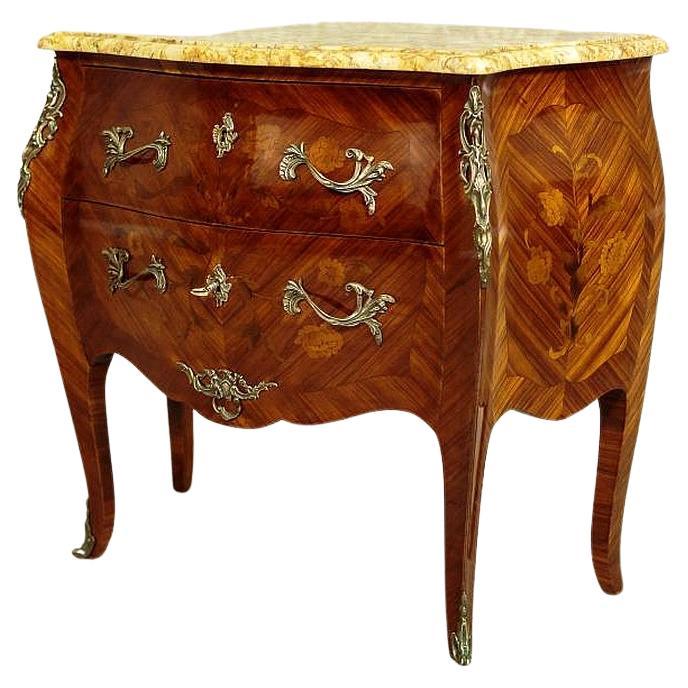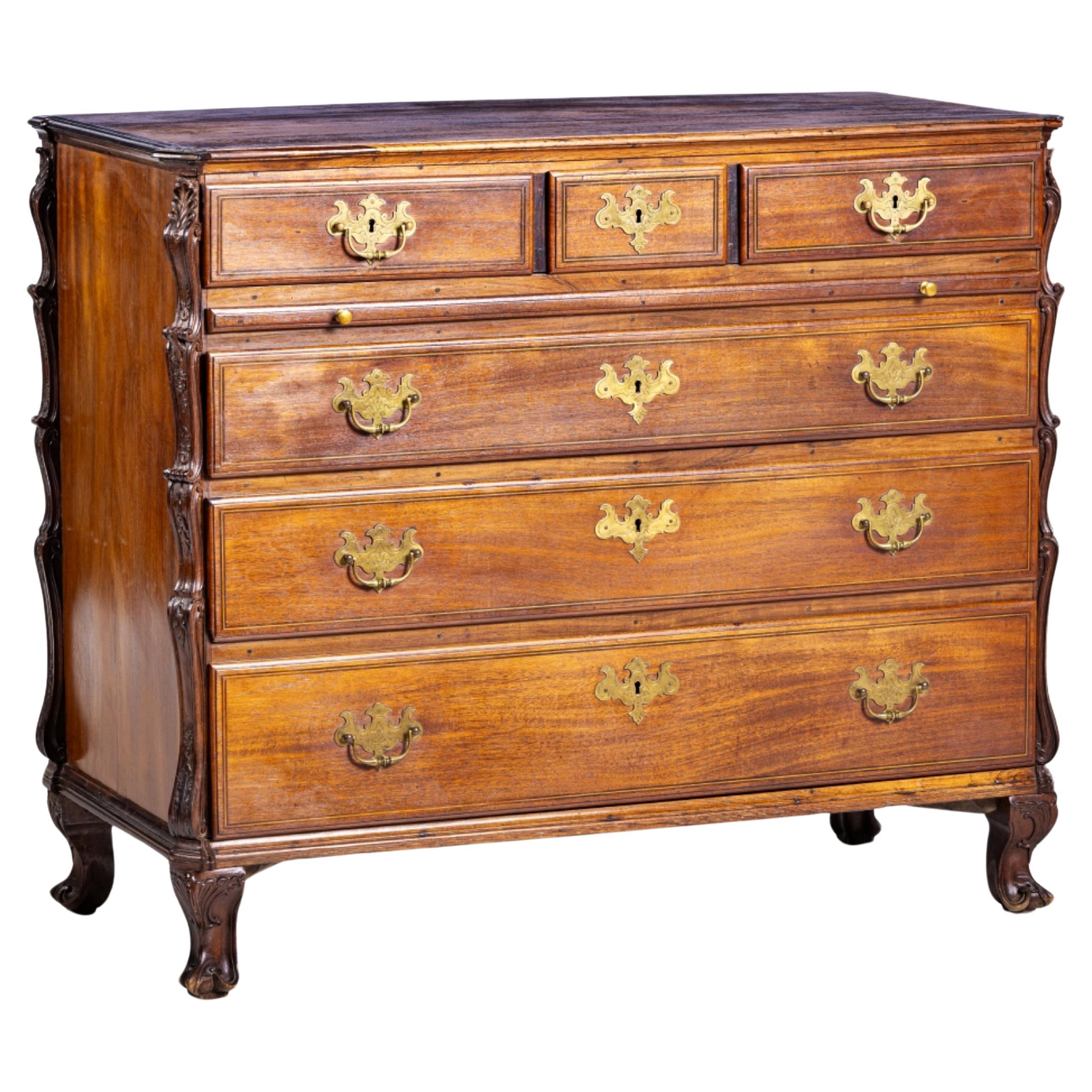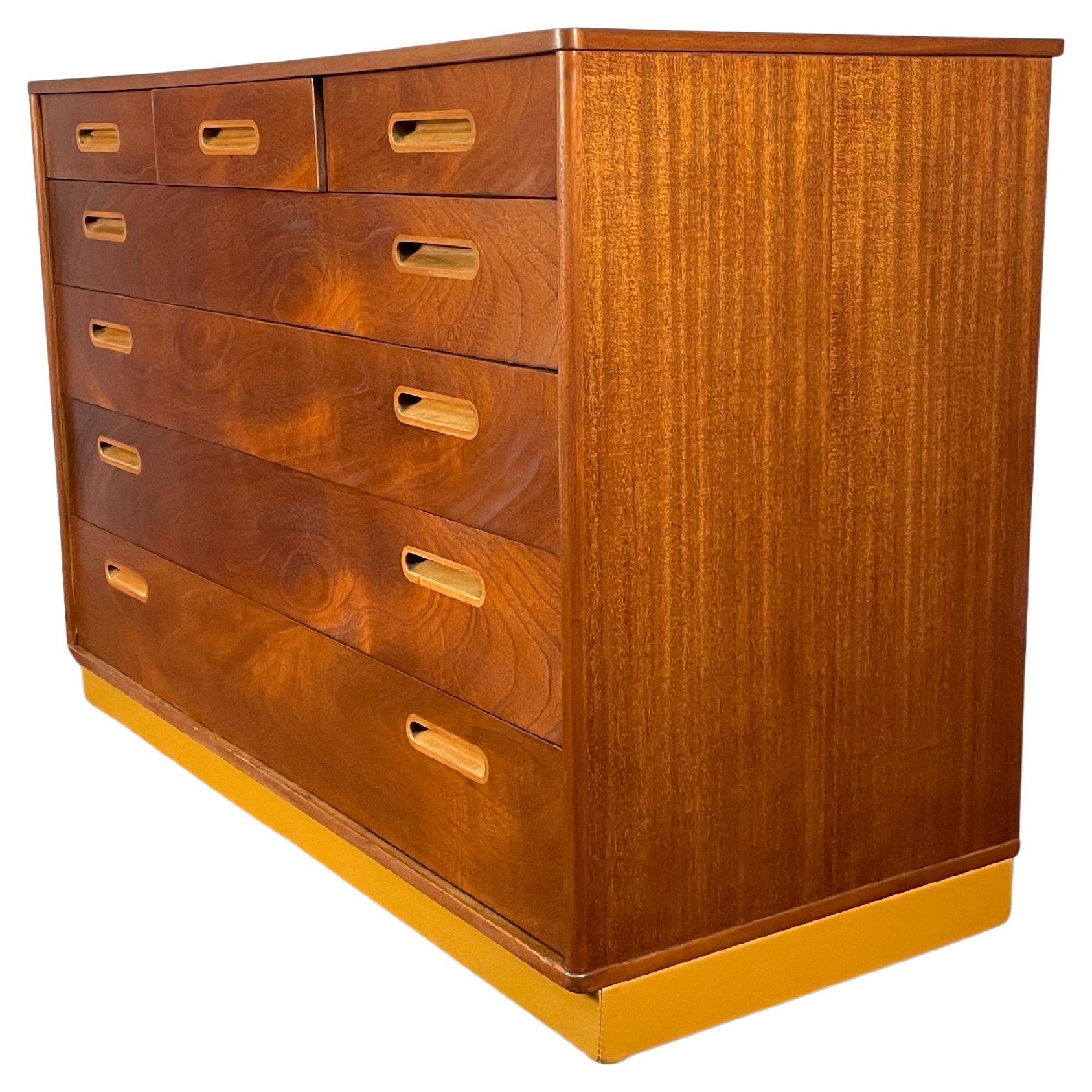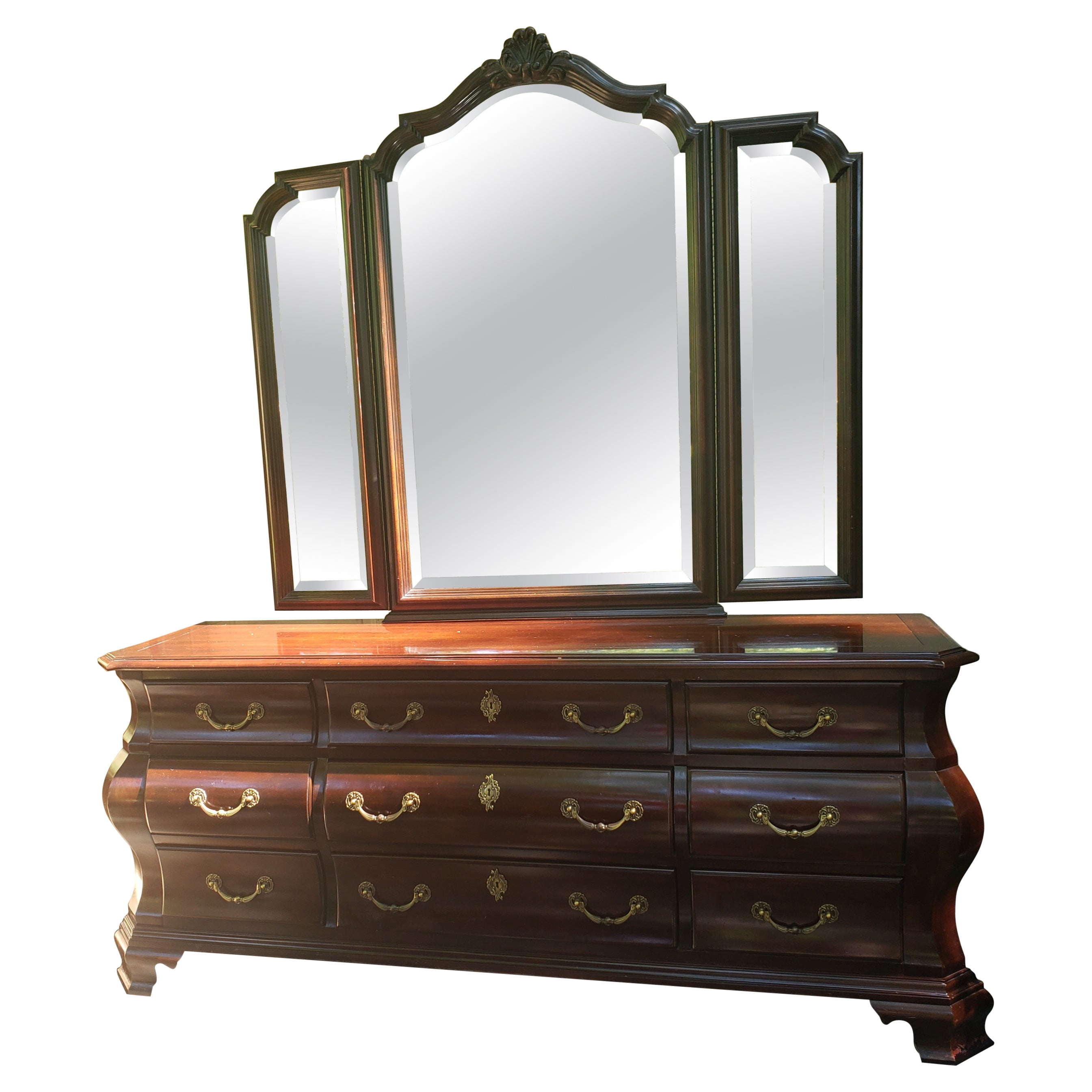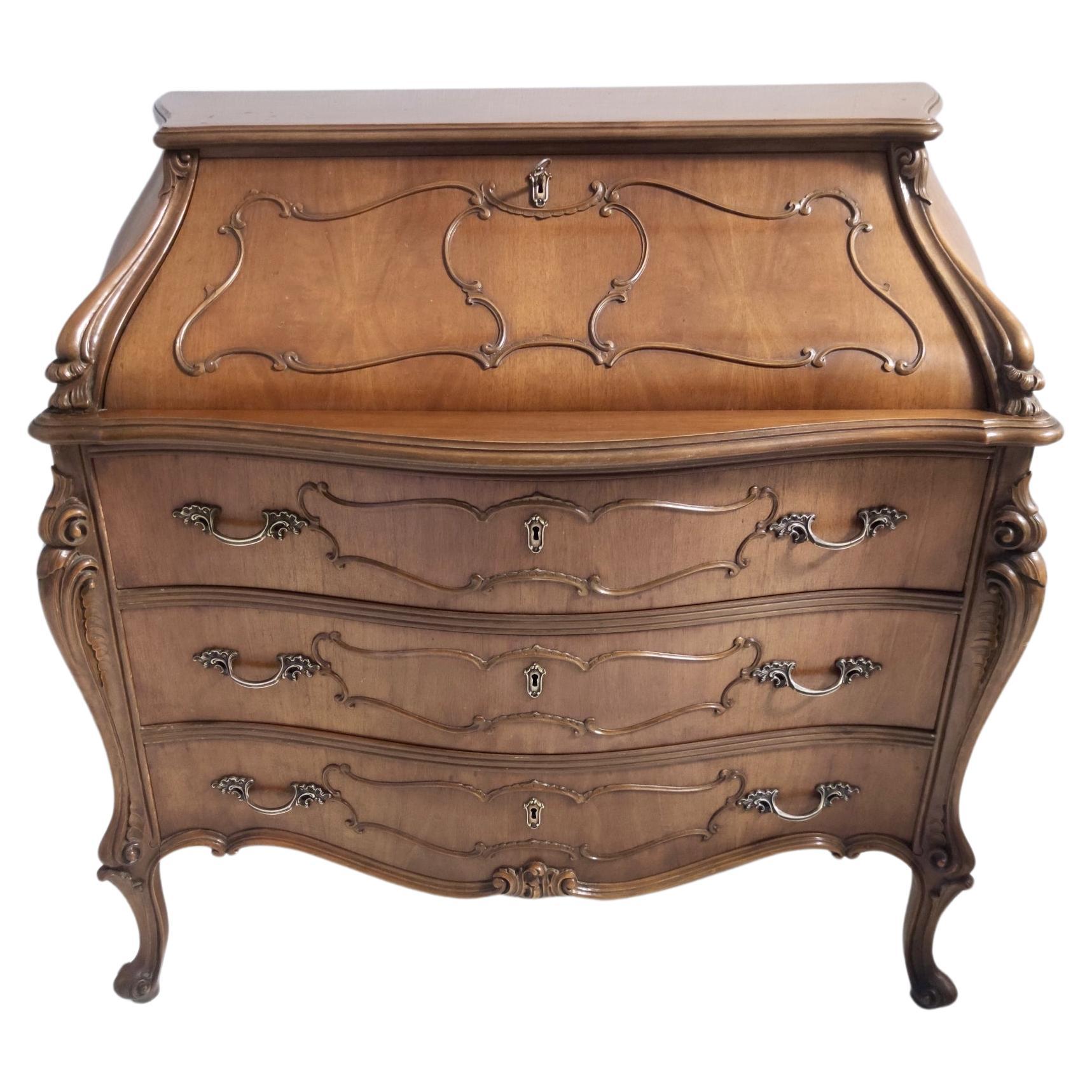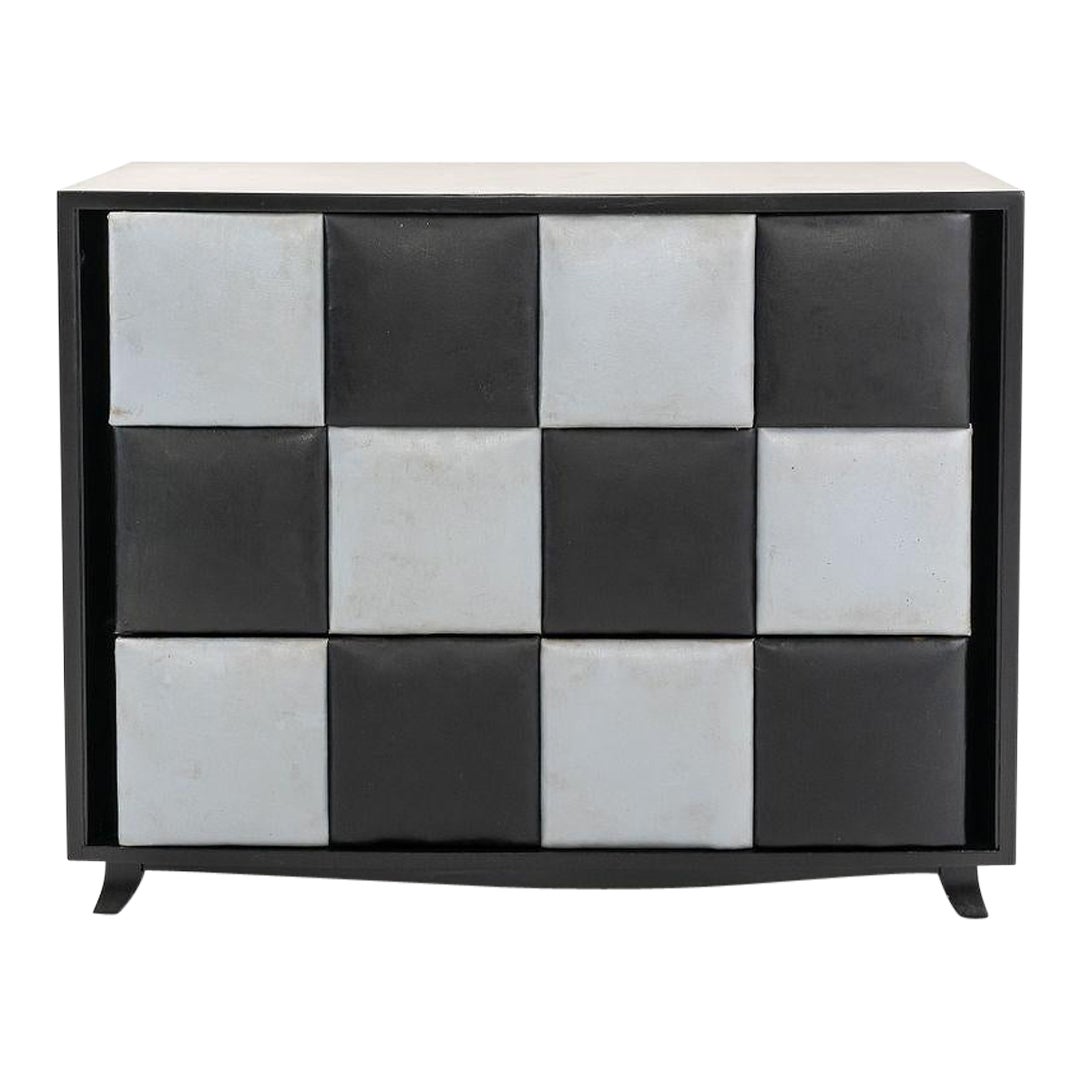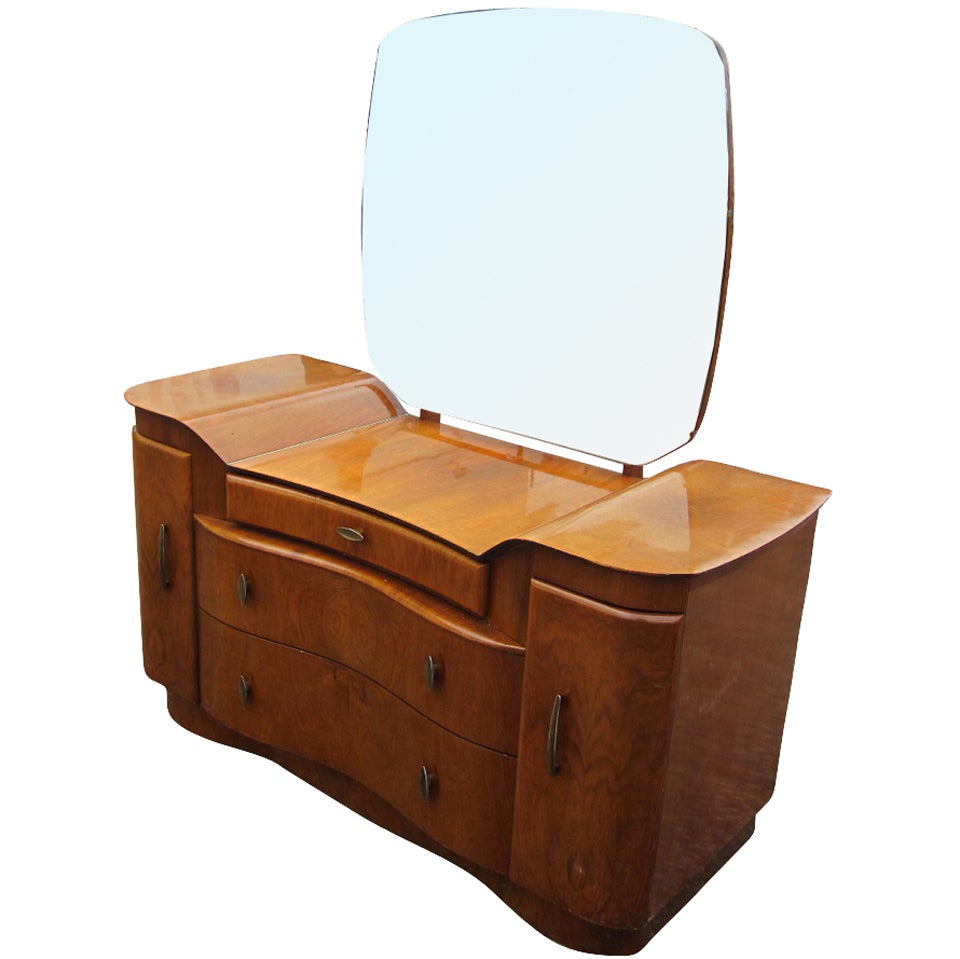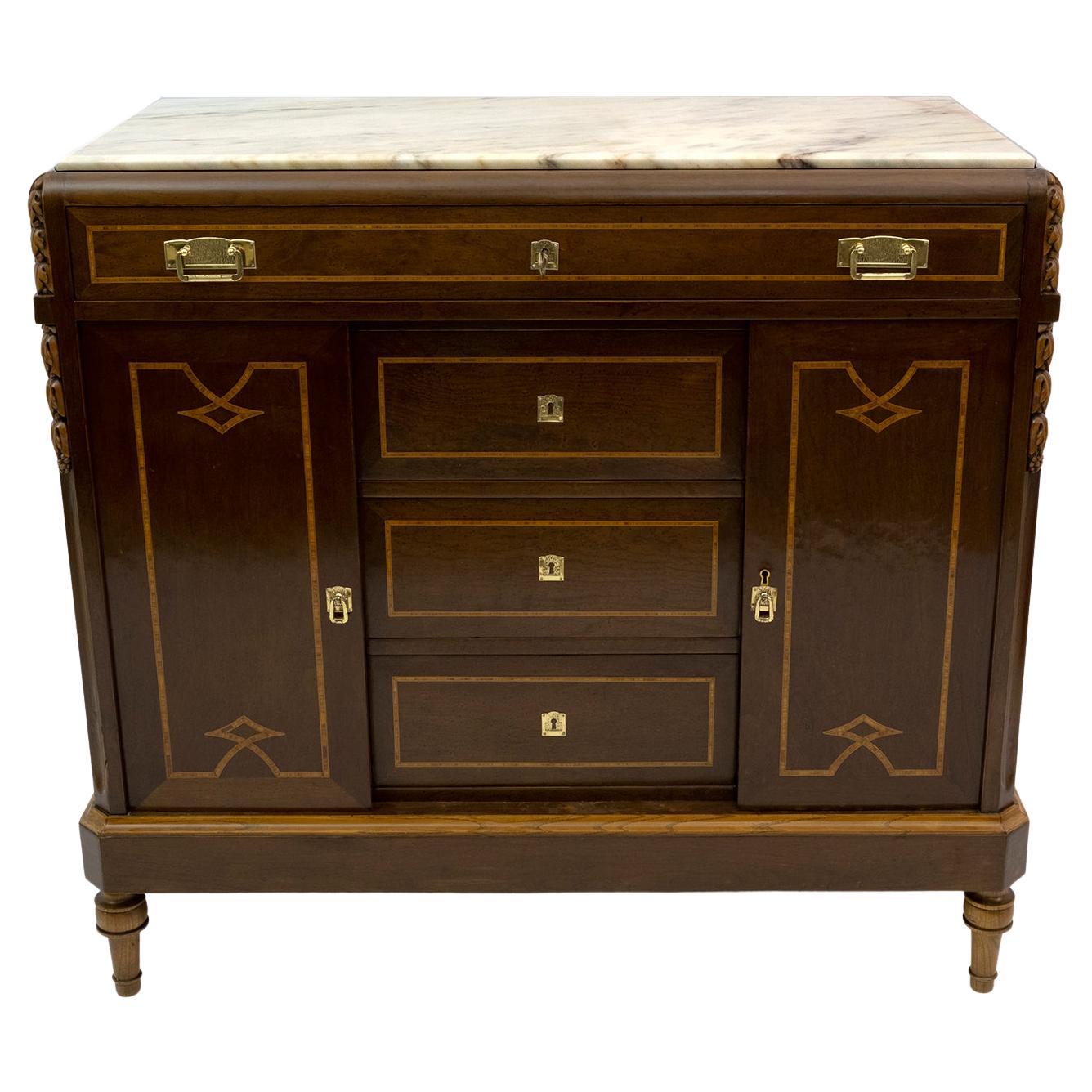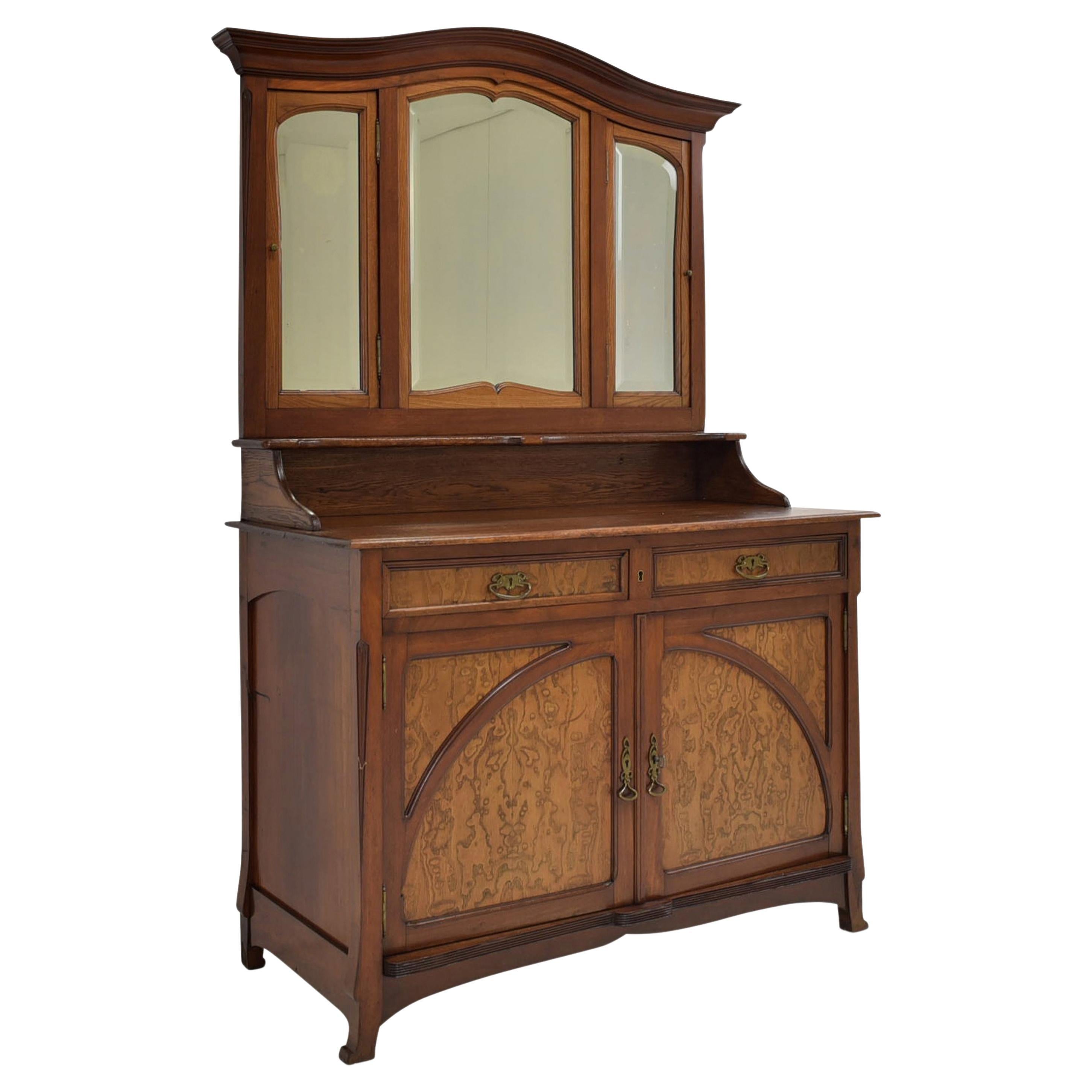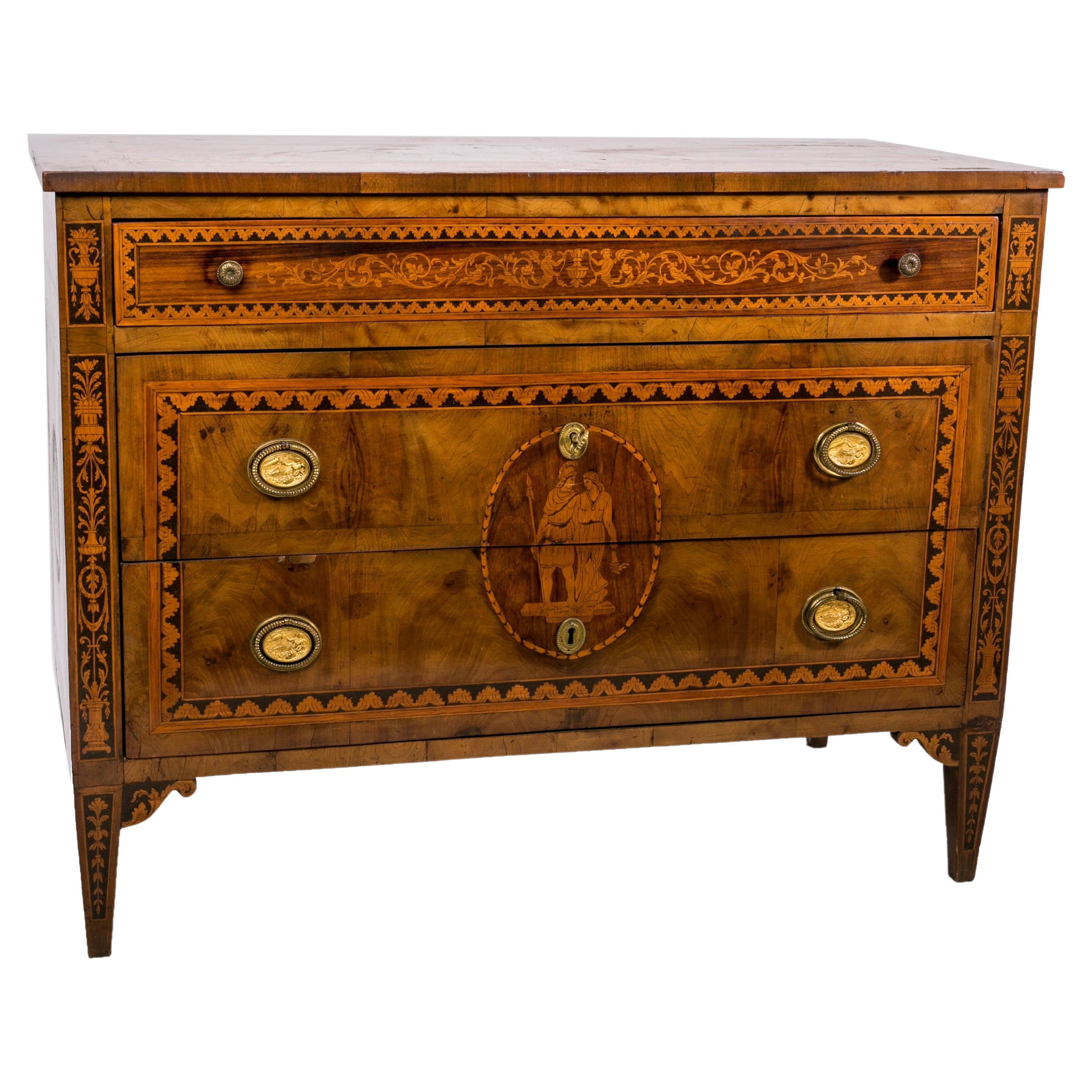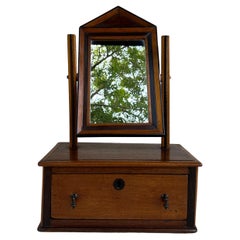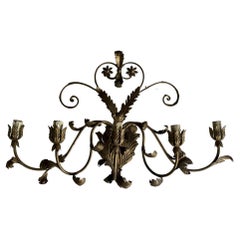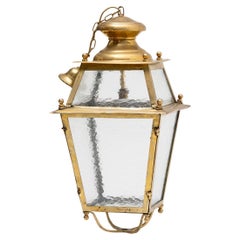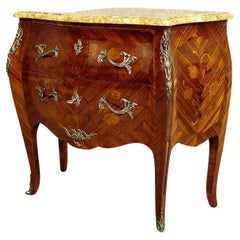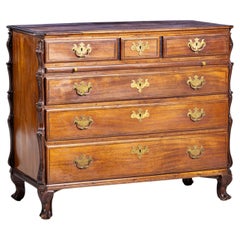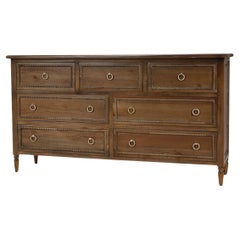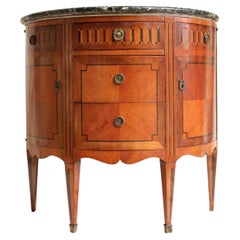
Portuguese Dresser D. Maria, in Mahogany, with Inlaids in Hawthorn and Pau-Santo
View Similar Items
Want more images or videos?
Request additional images or videos from the seller
1 of 10
Portuguese Dresser D. Maria, in Mahogany, with Inlaids in Hawthorn and Pau-Santo
About the Item
- Dimensions:Height: 33.86 in (86 cm)Width: 33.47 in (85 cm)Depth: 17.33 in (44 cm)
- Style:Baroque (In the Style Of)
- Materials and Techniques:
- Place of Origin:
- Period:
- Date of Manufacture:1800s
- Condition:
- Seller Location:Lisboa, PT
- Reference Number:1stDibs: LU7365234005782
About the Seller
5.0
Vetted Professional Seller
Every seller passes strict standards for authenticity and reliability
Established in 2018
1stDibs seller since 2022
14 sales on 1stDibs
Typical response time: 1 hour
Authenticity Guarantee
In the unlikely event there’s an issue with an item’s authenticity, contact us within 1 year for a full refund. DetailsMoney-Back Guarantee
If your item is not as described, is damaged in transit, or does not arrive, contact us within 7 days for a full refund. Details24-Hour Cancellation
You have a 24-hour grace period in which to reconsider your purchase, with no questions asked.Vetted Professional Sellers
Our world-class sellers must adhere to strict standards for service and quality, maintaining the integrity of our listings.Price-Match Guarantee
If you find that a seller listed the same item for a lower price elsewhere, we’ll match it.Trusted Global Delivery
Our best-in-class carrier network provides specialized shipping options worldwide, including custom delivery.More From This Seller
View AllDressing Table, Mahogany and Other Woods, Portugal 19th Century
Located in Lisboa, PT
Dressing table, mahogany and other woods. Portugal 19th century.
Category
Antique 19th Century Portuguese Jewelry Boxes
Materials
Mahogany
Aplique of 5 Fires in Wrought and Gilded Iron, Electrified, Portugal 30's
Located in Lisboa, PT
Aplique of 5 fires in wrought and gilded iron. Electrified. Portugal 30's.
Category
20th Century Portuguese Wall Lights and Sconces
Materials
Iron
Portuguese Brass Lantern in Gilded Finish, c.1950
Located in Lisboa, PT
This is a beautiful Portuguese brass lantern, dating from around 1950. The lantern has an elegant four-sided (quadrilateral) shape, with slightly tapered panels that give it a refine...
Category
20th Century Portuguese Lanterns
Materials
Brass
Oak Table with Spears Legs, Portugal 20th Century
Located in Lisboa, PT
Wooden table.
Table legs represent spears.
Great conditions.
Category
20th Century Portuguese Rustic Side Tables
Materials
Oak
Portrait of D. Maria Bárbara De Bragança, Circle of Louis-Michel Van Loo
By H. van Loon
Located in Lisboa, PT
PORTRAIT OF D. MARIA BÁRBARA DE BRAGANÇA (1711-1758), QUEEN OF SPAIN
Circle of Louis-Michel van Loo (1707-1771)
Oil on canvas
Her Royal Highness, the Infanta Maria Barbara of Braganza (1711-1758) was the first-born child of King John V of Portugal (1689-1750) and his queen consort Maria Anna of Austria (1683-1754). Born in December 1711, she had the Convent Palace of Mafra built in her honour following a vow made by her royal father. Her status as Princess of Brazil, inherent to 18th century Portuguese presumptive heirs, would however be superseded once the queen gave birth to two male princes, D. Pedro (1712-1714) and D. José (1714-1777), preventing her from ascending to the throne.
Daughter of one of the most illustrious monarchs of his time, Maria Barbara was carefully educated to become a fond admirer of the arts, and of music in particular, having had the Italian composer Domenico Scarlatti (1685-1757) as her music teacher.
On the 10th January 1723 the young princess was betrothed to the Infante Ferdinand of Spain (1713-1759), eldest son of King Philip V (1683-1746). Six years later, on the 19th January, she entered her new country in a carefully choreographed ceremony that became known to history as the “Exchange of the Princesses”. This unique event took place on a specially built Bridge-Palace, a wooden, luxuriously decorated structure that included various modules and rooms, on both banks of the river Caia, the natural border between the town of Elvas in Portugal and of Badajoz in Spain. Simultaneously, on the same day that the Portuguese Infanta crossed the border to marry the Spanish Crown Prince, her new sister in law, the Infanta Mariana Victoria of Bourbon (1718-1781), her husband’s sister, crossed the same bridge in the opposite direction to marry Prince D. José, the Portuguese heir to the throne.
Once married, Maria Barbara would spend 17 years as Princess of Asturias, only becoming Queen of Spain at her husband’s accession following the death of Philip V in 1746. She is portrayed in the 1743 painting by Louis-Michel van Loo (1707-1771) now in the Prado Museum, in which Philip V had himself represented with all his close family.
The new Queen would take an important role at court eventually becoming the liaison between her husband and the King of Portugal, particularly throughout the negotiations for the Treaty of Madrid (1746-1750). Maintaining her interest in music, she patronized the Italian castrato singer Farinelli (1705-1782) while remaining close to her old master Scarlatti, having herself composed some sonatas for a large orchestra. She would also commission and fund the building of the Royal Salesians Monastery complex in central Madrid, where both her and Ferdinand VI are buried.
The portrait we are presenting for sale shows the Queen in half-length, turning left at three quarters. She is wearing a blue low-cut dress embroidered with flowers and foliage, over a lace cuffed white blouse, and an ermine cloak pined on the left-hand side by a diamond broach. The powdered hair style is held sideways by a seven diamond and black plume headdress and topped by a small gold and pearl crown. The right arm rests on a cushion while the left hand, at chest height, holds a miniature male portrait.
The Infanta’s features are analogous to the 1725 portrait by the painter Domenico Duprà (1689-1770), also in the Prado Museum collection. Further similarities can be found in another portrait by Louis-Michel van Loo, in which a seven diamond and black plume headdress is also present. In this work, the cushion supporting Maria Barbara’s right arm has also some obvious similarities to our painting. The same diamond headdress reappears in Van Loo’s above-mentioned portrait of Philip V’s family dated from 1743.
It is nevertheless in Lisbon’s Ajuda National Palace that it is possible to find an almost identical depiction of the Infanta holding a miniature portrait of her husband. In it, the future Ferdinand VI is portrayed facing right at three quarters and wearing a curly wig, suit of armour, the golden fleece insignia and a blue band, in a composition that closely resembles an 18th century Spanish school painting that appeared in the art market in January 2016.
Another detail common to various portraits of the Portuguese Infanta and Queen of Spain is the small gold and pearl crown on her head. In another Van Loo painting, also from the Prado Museum, in which Maria Barbara is portrayed as Queen, this crown is represented together with a headdress similar to the one previously described. Another two paintings by the same artist, at the Royal Academy of Saint Ferdinand, include the same ornament.
We must also refer the paintings by the artist Jean Ranc (1674-1735). In one, dating from 1729 (Prado Museum), the Infanta is depicted outdoors holding a flower bouquet and wearing a yellow silk dress with red cloak, and a set of diamond and ruby jewellery that includes a headdress similar to the one present in our portrait. Another work by the same artist, belonging to the Complutence University of Madrid, depicts the Infanta sumptuously dressed in identical colours to our painting and wearing an elaborate headdress and diadem.
These portraits, beyond their iconographical importance as contemporary records of the Infanta and Queen Maria Barbara, are also illustrative of 18th century fashion for jewelled head dressing. Often, flowers were combined with joyful adornments, composing almost theatrical displays that would reinforce the ostentatious nature of the image. The ornamental flowers and the chromatic character of the jewels would complement the luxury of the colourful dresses in blue, crimson, green or other silk shades, in compositions whose sole purpose was to highlight a royal sitter’s wealth and power, becoming an essential statement accessory within the strict court protocols and codes of conduct.
Circle of Louis-Michel van Loo (1707-1771)
Slowly but steadily, the resolute, tranquil and dignified attitude of Renaissance and Baroque portraiture becomes artificial and presumptuous. Mid 18th century society favours elusive expression and psychological deepness, albeit limited to the face, that, with emphasis on detail, on the rich colour palette and on changing costumes and landscapes, associated to the courtliness of gestures, creates a strongly artificial environment while maintaining a highly poetic intrinsic character.
Louis-Michel van Loo followed a dynasty of famous Dutch origin artists that had settled in France. Initially taught by his father, Jean-Baptiste von Loo (1684-1745), the younger van Loo studied in Turin and Rome and frequented the Paris Academy. In Rome he worked with his uncle Charles-André van Loo (1705-1765) and become a painter for the Turin Court. In 1737 he arrived in Spain being summoned by Philip V to succeed Jean Ranc as painter of the king’s chamber.
In Madrid, his work covers the numerous Court commissions and the Royal Saint Ferdinand Fine Arts Academy, of which he was a founding member and director for the Painting department in 1752. Is production at court consisted essentially of numerous portrait paintings, often Royal gifts...
Category
Antique 18th Century Spanish Baroque Paintings
Materials
Canvas
Composition of 16 Tiles with Angel Portugal 18th Century
Located in Lisboa, PT
Composition of 16 tiles with angel Portugal 18th century.
Composition made in the late 20th century.
Category
Antique 18th Century Ceramics
Materials
Oak
You May Also Like
Neo-Rococo Inlaid Dresser Veneered with Mahogany, circa 1930
Located in Opole, PL
Neo-Rococo Inlaid Dresser Veneered with Mahogany, circa 1930
A dresser, circa 1930, resembles furniture in the Louis XV style.
This piece of furniture ...
Category
Vintage 1930s French Rococo Revival Commodes and Chests of Drawers
Materials
Marble
$1,463 Sale Price / item
37% Off
18th Century Portuguese Dresser
Located in Madrid, ES
18th Century Portuguese Dresser
in vignette wood, Brazilian rosewood frames and satinwood inlays. With 3 drawers, 3 drawers and drying rack.
Wavy and scalloped top, decorated with a...
Category
Antique 18th Century Portuguese Renaissance Dressers
Materials
Wood
Edward Wormley Dresser in Mahogany and Leather for Dunbar
By Edward Wormley
Located in San Diego, CA
Uncommon Edward Wormley Dresser in Mahogany and Leather for Dunbar. Gorgeous restored vintage dresser with contrasting channelled recessed pulls in contrasting wood species. This pie...
Category
Vintage 1950s American Mid-Century Modern Dressers
Materials
Mahogany
Mahogany Antique Dresser
Located in Westwood, NJ
This beautifully crafted piece features a warm straw wash that complements any decor style. The delicate ring pulls add a hint of sophistication, making this chest a perfect addition...
Category
21st Century and Contemporary Asian French Provincial Dressers
Materials
Wood
$4,797 / item
Century Furniture French Bombe Style Mahogany Triple Dresser with Trifold Mirror
By Century Furniture
Located in Germantown, MD
High quality American made mahogany triple bombe dresser with trifold mirror. Good vintage condition. Dovetailed drawers perfectly functional. Measures 73 inches in width, 20.5 inche...
Category
Late 20th Century American Baroque Dressers
Materials
Brass
Vintage Baroque Solid Walnut Dresser with Inlaid Designs, Italy
Located in Bresso, Lombardy
Made in Italy, 1960s.
This is a majestic Baroque style dresser which is made in solid walnut.
It features bronze handles.
This dresser is a hig...
Category
Vintage 1960s Italian Baroque Revival Dressers
Materials
Bronze
